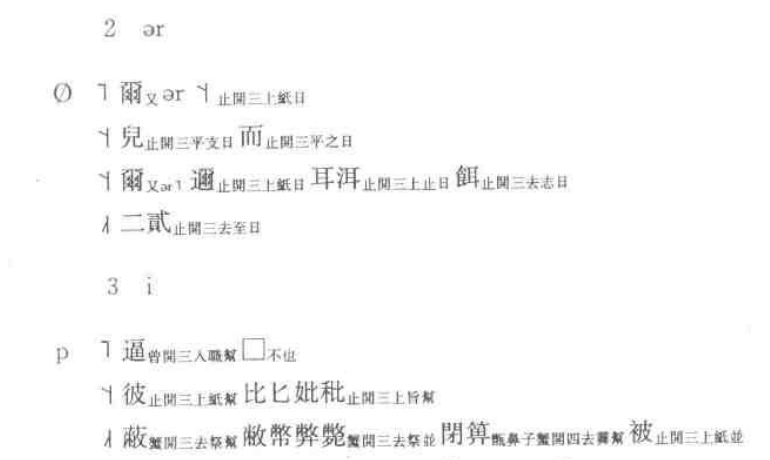Here is an incredibly horrible quality excerpt (read: screenshot) from 《四川邛崍油榨方言記》:
here's the highlights from 2 ər that I wanted to point out:
爾 止開三上紙日
兒 止開三平支日
而 止開三平之日
二 止開三去至日
and for contrast the highlights from 3 i
逼 曾開三入職幚
彼 止開三上紙幚
秕 止開三上旨幚
蔽 蟹開三去祭幚
箅 曾鼻子蟹開四去霽幚
The last two “XX” might be final + initial - 逼 for instance 職幚 final i plus initial b -- a backwards 反切 - a 切反, if you will. 反切 usually includes the correct tone with the final, which doesn't seem to be carried out here - 職 would be second-tone, here, if anything - and not first like the tone that is noted for 逼.
上/平/入/去 is, obviously, a tone marker - still not really seeing how the pre-fixed number fits in with it, though.
“X” + 開 I'm more lost on.
Does anyone know what this method is?
How does its components work?

